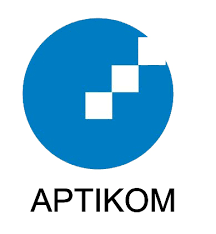Visualization of Alumni Performance Using Dashboard to Support Higher Education Decision Making
DOI:
https://doi.org/10.18196/eist.v1i3.13174Keywords:
alumni, dashboard system, dashboard lifecycleAbstract
Universities in Indonesia create fierce competition. Alumni have an essential role for the educational institution, not only as a tool for measuring the performance quality and ability of education implementation but also as the standard or feedback to the perfection of the education system. One effective data presentation model is the dashboard system seen from the complexity, interactivity, and informative data presented. Therefore, this study aims to build a dashboard system at Universitas Muhammadiyah Yogyakarta (UMY). This study utilized the dashboard life cycle method in its implementation. This method had six stages: project initiation, design, construction, testing, launching and monitoring. This method allowed the study to show data on the number of judicium students, the number of graduates, the average GPA of the alumni, the average study period of alumni, and the number of alumni per graduation level for the 2012/2013 to 2017/2018 academic year, according to the accreditation forms and needs analysis. The dashboard system can provide information about alumni at UMY from 2012 to 2017. The dashboard system is ready to be applied as a decision-making tool, particularly as a strategy for improving the quality and empowering strategy for alumni of the university.
References
Firdaus, M. A., Putra, A., and Indah, D. R. Analisis Business Intelligence pada Pengelolaan Data Alumni: Upaya Mendukung Monitoring Kualitas Alumni di Perguruan Tinggi (Studi Kasus di Fakultas Ilmu Komputer Universitas Sriwijaya). Jurnal Generic, 8(2), 221–229. 2013.
Gounder, M. S., Iyer, V. V., & Al Mazyad, A. (2016, March). A survey on business intelligence tools for university dashboard development. In 2016 3rd MEC International Conference on Big Data and Smart City (ICBDSC) (pp. 1-7). IEEE.
Leitner, P., & Ebner, M. Development of a dashboard for Learning
Analytics in Higher Education. In International Conference on Learning and Collaboration Technologies (pp. 293-301). Springer, Cham. July,2017.
Harvey, A. J., and Keyes, H. How do I compare thee? An evidence-based approach to the presentation of class comparison information to students using Dashboard. Innovations in Education and Teaching International. 2019.
Prasetiya, H. P., and Susilowati, M. “Visualisasi informasi data perguruan tinggi dengan data warehouse dan dashboard system”. JuTISI (Jurnal Teknik Informatika dan Sistem Informasi), 2(3), 2016.
Inmon, W. H. (1996). The data warehouse and data mining. Communications of the ACM, 39(11), 49-51.
Vaisman, A., & Zimányi, E. (2014). Data warehouse systems. Data-Centric Systems and Applications.
Santoso, L. W. “Data warehouse with big data technology for higher education. Procedia Computer Science”, Science Direct., vol.124, pp.93-99, 2017.
Rainardi, V. Building a Data Warehouse With Examples in SQL Server. 1st edition. Apress. 2008.
Jr., M. C. C., Donovan, C., Fairchild, K., Green, K., McKinney, C., Mollohan, B., … Zerkich, J. (2010). Executive Dashboard Implementation Guide 201. HIMSS.
Asroni, T., Arimbi, B., & Riyadi, S. “Implementing of Data Warehouse Data Alumni using the Single Dimensional Data Store method”. In Journal of Physics: Conference Series (Vol. 1471, No. 1, p. 012021). IOP Publishing, Feb. 2020.
Traverso, M., Finkbeiner, M., Jørgensen, A., and Schneider, L. Life cycle sustainability dashboard. Journal of industrial ecology, vol. 16(5), pp.680-688, July 2012.



